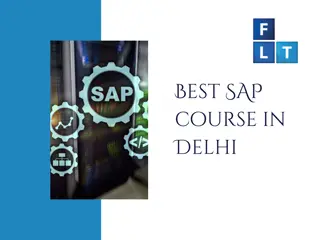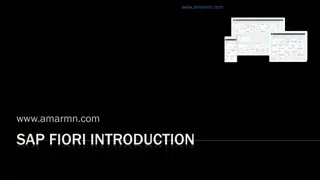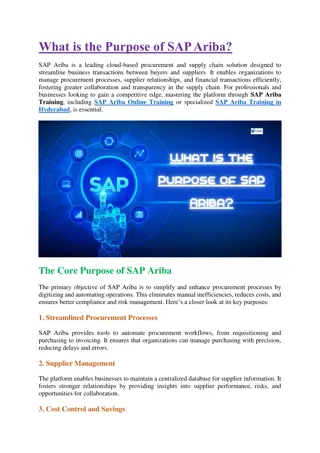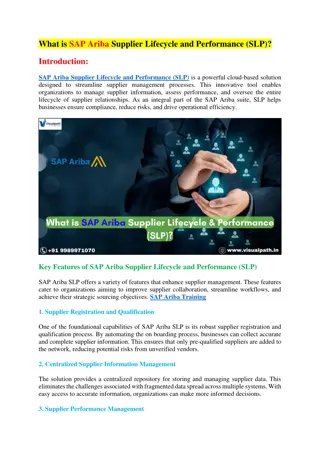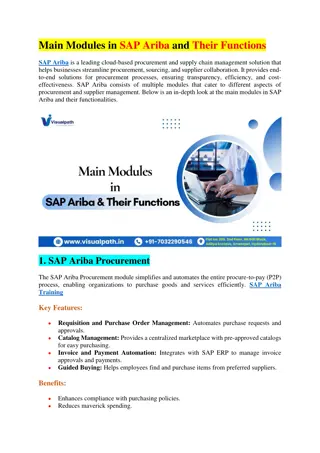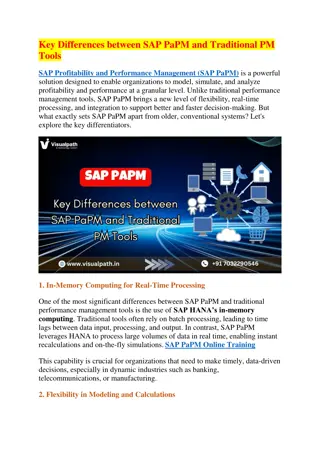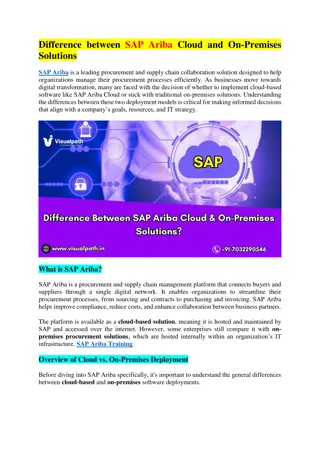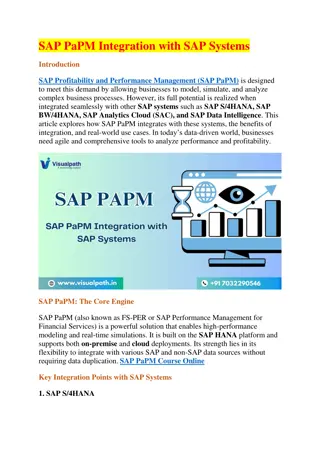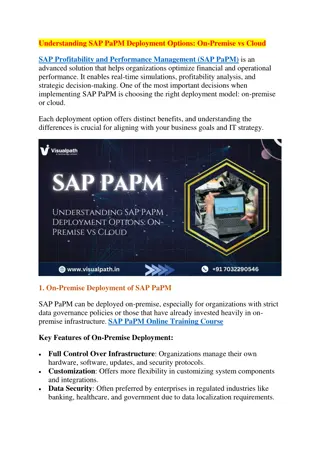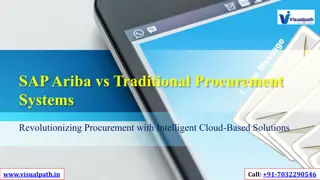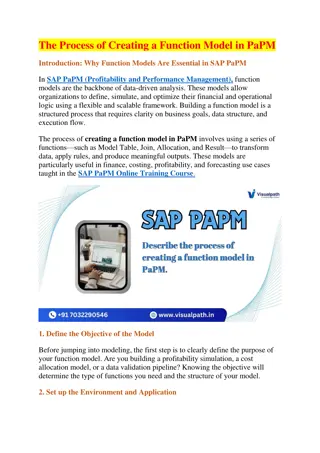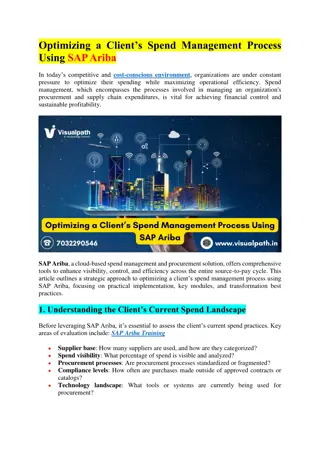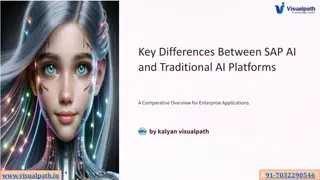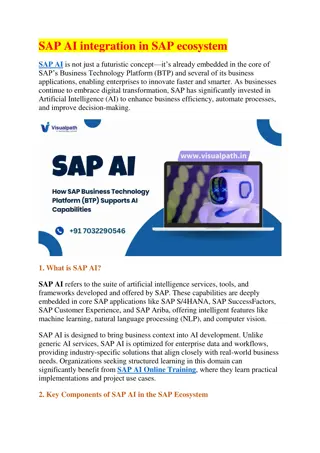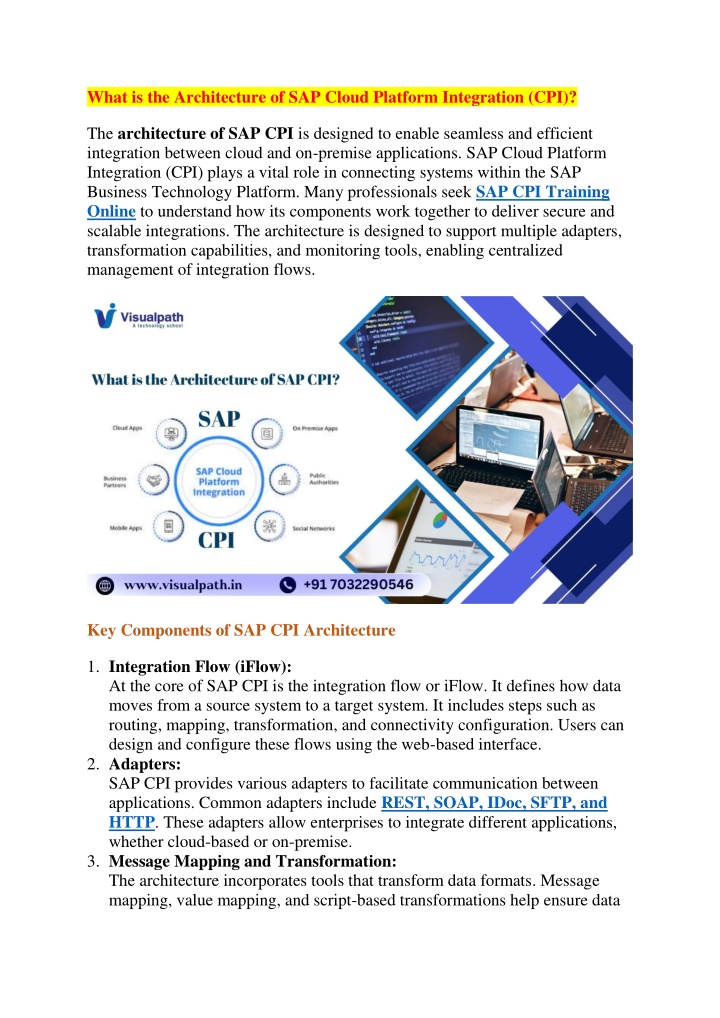
SAP CPI Online Training In Hyderabad | Best SAP CPI
Take your career to the next level with VisualPathu2019s SAP CPI Online Training in Hyderabad. Our SAP CPI Training offers practical learning through real-time projects, expert guidance, flexible schedules, and lifetime access to materials. Gain the
Download Presentation

Please find below an Image/Link to download the presentation.
The content on the website is provided AS IS for your information and personal use only. It may not be sold, licensed, or shared on other websites without obtaining consent from the author. If you encounter any issues during the download, it is possible that the publisher has removed the file from their server.
You are allowed to download the files provided on this website for personal or commercial use, subject to the condition that they are used lawfully. All files are the property of their respective owners.
The content on the website is provided AS IS for your information and personal use only. It may not be sold, licensed, or shared on other websites without obtaining consent from the author.
E N D
Presentation Transcript
What is the Architecture of SAP Cloud Platform Integration (CPI)? The architecture of SAP CPI is designed to enable seamless and efficient integration between cloud and on-premise applications. SAP Cloud Platform Integration (CPI) plays a vital role in connecting systems within the SAP Business Technology Platform. Many professionals seek SAP CPI Training Online to understand how its components work together to deliver secure and scalable integrations. The architecture is designed to support multiple adapters, transformation capabilities, and monitoring tools, enabling centralized management of integration flows. Key Components of SAP CPI Architecture 1.Integration Flow (iFlow): At the core of SAP CPI is the integration flow or iFlow. It defines how data moves from a source system to a target system. It includes steps such as routing, mapping, transformation, and connectivity configuration. Users can design and configure these flows using the web-based interface. 2.Adapters: SAP CPI provides various adapters to facilitate communication between applications. Common adapters include REST, SOAP, IDoc, SFTP, and HTTP. These adapters allow enterprises to integrate different applications, whether cloud-based or on-premise. 3.Message Mapping and Transformation: The architecture incorporates tools that transform data formats. Message mapping, value mapping, and script-based transformations help ensure data
is compatible across systems. This flexibility makes SAP CPI ideal for heterogeneous environments. 4.Security and Authentication: Security is a critical part of the architecture. Certificates, OAuth authentication, and secure communication protocols ensure that sensitive data is protected during integration processes. Deployment and Monitoring in SAP CPI 5.Multi-Tenant Architecture: SAP CPI is deployed in a multi-tenant environment, allowing different customers to operate independently while sharing underlying infrastructure. This architecture enhances scalability and optimizes resource utilization. 6.Monitoring and Alerting: Real-time monitoring dashboards track message flows, errors, and performance metrics. This helps users identify issues and resolve them quickly, ensuring uninterrupted data integration. Many professionals take SAP CPI Online Training to learn how to leverage these tools effectively. 7.Prepackaged Content: SAP provides prebuilt integration flows that accelerate deployment. These templates address common scenarios like integrating SAP S/4HANA with third-party solutions, thus reducing implementation time. Advantages of SAP CPI s Architecture 8.Flexibility and Scalability: The modular architecture allows businesses to adapt integrations as their needs evolve. Whether it s connecting with new applications or expanding existing flows, SAP CPI supports growing enterprise environments. 9.Centralized Management: The architecture ensures that all integration artifacts are managed from a single interface, improving governance and simplifying operations. 10.Support for Hybrid Environments: With adapters and cloud connectors, SAP CPI architecture supports integrations between cloud services and legacy on-premise systems. FAQ,s 1. What is the architecture of SAP CPI? A cloud-based framework connecting apps via adapters, iFlows, and secure protocols.
2. What are iFlows in SAP CPI? They define data routing, transformation, and connectivity between source and target systems. 3. How does SAP CPI ensure data security? Uses certificates, OAuth, and secure communication protocols to protect data in transit. 4. Why is monitoring important in SAP CPI? It helps track errors, performance, and message flows for seamless integration operations. 5. How can one learn SAP CPI architecture? Enroll in SAP CPI Training Online for hands-on experience and best practice guidance. Best Practices and Learning Path For beginners and seasoned professionals alike, understanding the architecture is essential for successful implementation. Many users enroll in SAP CPI Training to gain hands-on experience with iFlows, adapters, and monitoring tools. Best practices include designing reusable components, maintaining version control, and ensuring robust security protocols are in place. Before concluding, it s important to note that thorough knowledge of the architecture, coupled with practical experience, lays the foundation for mastering SAP CPI. Professionals seeking in-depth learning are encouraged to pursue SAP CPI Training Online, which offers structured modules and real- world scenarios to build expertise. Visualpath stands out as the best online software training institute in Hyderabad. For More Information aboutthe SAP CPI Online Training Contact Call/WhatsApp: +91-7032290546 Visit: https://visualpath.in/sap-cpi-training.html



